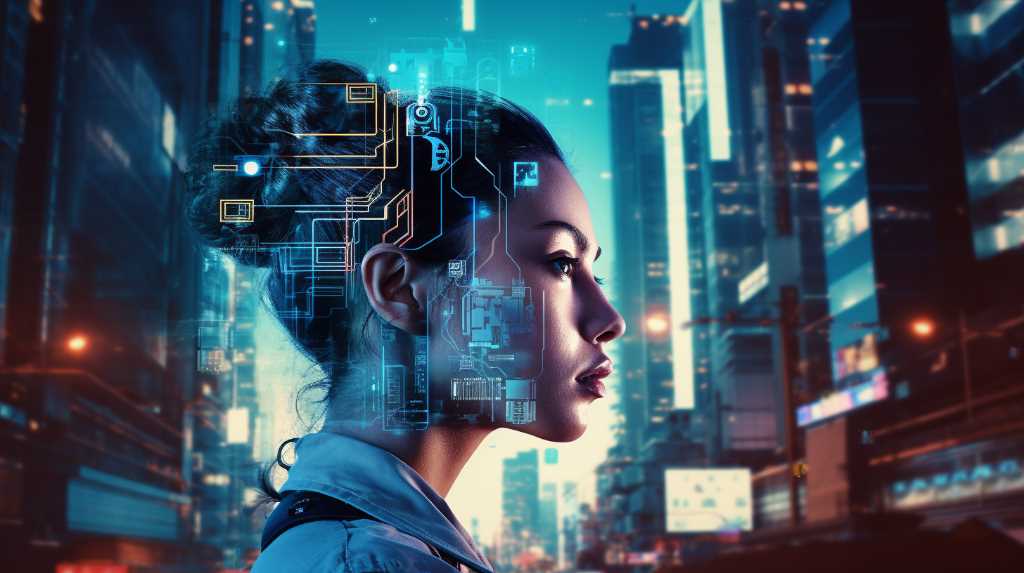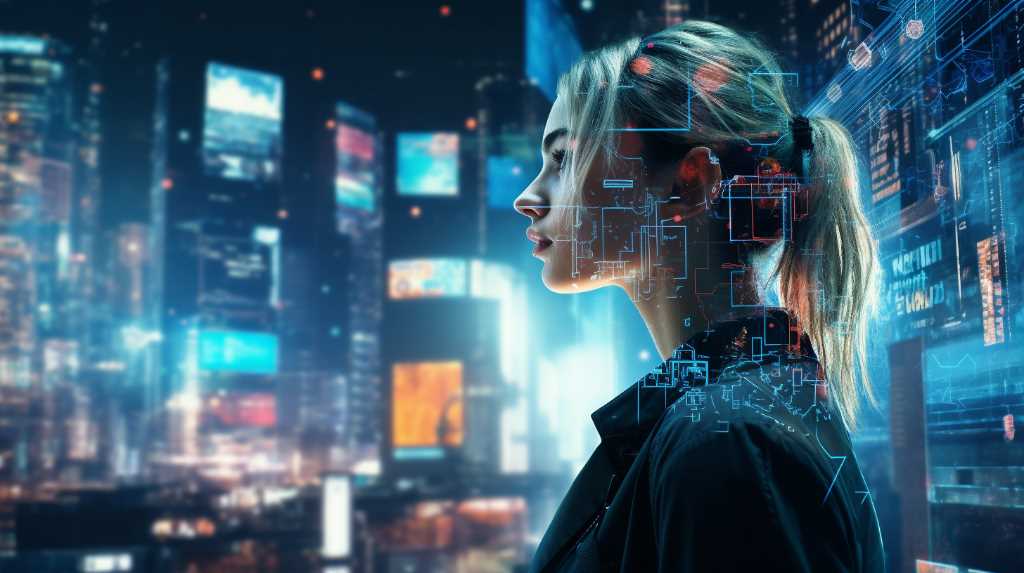We’ve found the solution to the AI industry’s energy consumption crisis.
Did you know that data centers are projected to consume 21% of the world’s electricity by 2030?
In our article, we delve into groundbreaking techniques to reduce energy use, such as power-capping hardware and strategic job scheduling.
We also highlight the need for transparency and collaboration within the industry.

Join us as we explore how accessible resources and the efforts of the LLSC can pave the way towards a more sustainable AI industry.
Key Takeaways
- Computing industry’s carbon emissions exceed those of the entire airline industry.
- Power-capping hardware and strategic job scheduling can significantly reduce energy consumption in data centers.
- Hyperparameter optimization and matching models with carbon-efficient hardware can greatly reduce energy waste in AI model development.
- Lack of transparency and collaboration in the computing industry regarding carbon emissions is being addressed, with a shift towards energy transparency.
The Carbon Emissions Challenge
While addressing the carbon emissions challenge in the AI industry, it’s crucial to recognize the urgent need for sustainable practices and energy-efficient solutions.
The environmental impact of data centers is a significant concern, as the computing industry’s carbon emissions exceed those of the entire airline industry. To combat this, sustainable practices in the computing industry are crucial.
Techniques such as power-capping hardware and strategic job scheduling can reduce energy consumption in data centers. Analyzing the carbon footprint of high-performance computing systems provides valuable insights for sustainability improvements. Efficient AI model development, through hyperparameter optimization and hardware optimization, can significantly reduce energy waste.

However, there’s incentive-misalignment and a lack of consideration for secondary factors in the industry. Transparency and reporting play a vital role in addressing these challenges, with tools and resources available to help reduce AI energy consumption.
Collaboration with data centers can have a significant impact, putting control in the hands of AI developers to make energy-conscious decisions.
Techniques for Data Center Energy Reduction
To reduce energy consumption in data centers, we employ power-capping hardware and strategic job scheduling techniques. Power capping technology allows us to limit the power consumption of servers, reducing energy usage by 12-15%. This has minimal impact on model performance and leads to cooler GPUs, reducing stress on the cooling system.
Additionally, integrating software with the scheduler system enables power-capping across data center systems. Strategic job scheduling further enhances energy efficiency by optimizing the allocation of resources, reducing the need for cooling.

Analyzing Carbon Footprint of Computing Systems
We frequently analyze the carbon footprint of computing systems in order to assess their sustainability and make necessary changes for next-generation systems.
This analysis is crucial because the impact of carbon emissions on climate change can’t be ignored. By understanding the carbon footprint of computing systems, we can identify areas for improvement and implement strategies to reduce their environmental impact.
One way to achieve this is by leveraging the advantages of renewable energy sources, such as solar or wind power, to power computing systems. By transitioning to renewable energy, we can significantly reduce the carbon emissions associated with computing operations.
This shift towards renewable energy not only helps mitigate climate change but also promotes a more sustainable and environmentally responsible approach to AI and computing industry as a whole.

Efficient AI Model Development
As we continue to analyze the carbon footprint of computing systems, it’s essential to focus on efficient AI model development. By implementing energy efficient model training techniques, we can significantly reduce energy waste and contribute to a more sustainable AI industry.
Here are three key strategies for efficient AI model development:
- Hyperparameter optimization: By stopping underperforming models early, we can reduce energy waste by up to 80% during model training. This approach ensures that only the most promising models are pursued, saving both time and energy.
- AI hardware optimization: Optimizing the mix of hardware used for model training can decrease energy consumption by 10-20% without compromising quality-of-service targets. This allows cloud customers to select the most appropriate hardware and avoid overestimating their needs.
- Transparency and reporting: Providing AI developers with tools and reports that show their energy consumption can promote awareness and accountability. This empowers developers to make energy-conscious decisions and contributes to the overall goal of reducing the energy footprint of AI models.
Incentive-misalignment and Secondary Factors
In light of the AI industry’s energy consumption crisis, it is imperative to address the misalignment of incentives and the impact of secondary factors. Data centers, driven by the demand for bigger and better models, prioritize performance over energy efficiency. While renewable energy credits are being used, they are insufficient to meet the growing energy demands. Additionally, the majority of electricity powering data centers still comes from fossil fuels, exacerbating carbon emissions. Furthermore, the water used for cooling contributes to stressed watersheds. The lack of systematic studies on energy-saving techniques and limited industry collaboration hinder progress in addressing these issues. However, there are positive signs of change, with some industry players disclosing their carbon footprint and showing a shift towards energy transparency.
| Incentive Alignment | Renewable Energy Credits | Secondary Factors |
|---|---|---|
| Misaligned incentives prioritize performance over energy efficiency in data centers. | Renewable energy credits are insufficient to meet growing energy demands. | Water used for cooling contributes to stressed watersheds. |
| Lack of systematic studies and limited industry collaboration hinder progress in energy-saving techniques. | Majority of electricity powering data centers comes from fossil fuels. | Lack of transparency and accessibility in AI industry. |
| Positive signs of change with some industry players disclosing carbon footprint and showing a shift towards energy transparency. |
Importance of Transparency and Reporting
Addressing the importance of transparency and reporting is crucial in solving the AI industry’s energy consumption crisis. Transparency and reporting bring several benefits to the AI industry in terms of energy consumption. Here are three key benefits:

- Accountability: Energy reporting and transparency hold AI developers and data centers accountable for their energy usage. This allows for better tracking and understanding of energy consumption, enabling targeted efforts to reduce energy waste.
- Benchmarking: Transparency in energy reporting enables benchmarking of energy consumption across different AI models and data centers. This allows for identification of best practices and encourages competition to improve energy efficiency.
- Collaboration: Transparency and reporting foster collaboration among AI developers, data centers, and hardware manufacturers. By sharing energy consumption data and techniques, stakeholders can collectively overcome challenges in implementing energy-saving techniques in data centers.
Collaboration With Data Centers
By promoting transparency and reporting, we can collaborate with data centers to address the AI industry’s energy consumption crisis. Controlled energy consumption in data centers is crucial for reducing the environmental impact of AI development. Through collaboration, AI developers can have a say in the decision-making process regarding energy-conscious practices. This includes considering the necessity of training models and being willing to slow down GPUs for energy savings.
By working together, we can empower AI developers to make informed choices that prioritize energy efficiency. This collaboration can lead to significant reductions in energy consumption and cost, making a positive impact on the environment.
The availability of tools and resources, such as those provided by the LLSC, supports this collaboration and helps data centers and users reduce their energy footprint.
Availability of Resources and Publications
We have a wide range of resources and publications available to support AI developers in reducing their energy footprint. These resources are designed to provide access to energy-saving tools and promote collaborative research efforts.

Here are three key ways in which these resources can assist AI developers in their quest for energy efficiency:
- Access to energy-saving tools: Our resources provide AI developers with access to a variety of tools that can help them optimize their models and reduce energy consumption. These tools range from power-capping hardware to software integration with scheduler systems, enabling developers to make informed decisions about energy usage.
- Collaborative research efforts: Our publications highlight the latest research findings and insights in the field of energy-aware computing. By sharing knowledge and collaborating with others in the industry, AI developers can benefit from collective expertise and work together towards finding innovative solutions to reduce energy consumption.
- Information and resources to reduce AI energy consumption: Our resources offer valuable information and practical guidance on how AI developers can minimize their energy footprint. From best practices for hyperparameter optimization to guidance on selecting hardware for cloud customers, these resources empower developers to make energy-conscious decisions and contribute to a more sustainable AI industry.
LLSC’s Energy-Reporting Tools
Our resources and publications include LLSC’s energy-reporting tools, which provide AI developers with valuable insights into their energy consumption. These tools play a crucial role in addressing the energy consumption crisis in the AI industry. By measuring and reporting energy usage, developers can make informed decisions to optimize their models and reduce their carbon footprint. LLSC’s energy-reporting tools offer a comprehensive overview of energy consumption, allowing developers to identify areas of improvement and implement energy-saving techniques. Here is an example of how LLSC’s energy-reporting tools can help AI developers:
| Energy-Reporting Tools | Impact on AI Energy Consumption |
|---|---|
| Real-time monitoring | Enables developers to track and analyze energy usage throughout the development process. |
| Energy breakdown | Provides a detailed breakdown of energy consumption by different components, allowing developers to identify energy-intensive areas. |
| Comparative analysis | Allows developers to compare the energy efficiency of different models and hardware configurations, enabling them to make more energy-conscious choices. |
| Recommendations | Offers actionable recommendations to optimize energy usage, such as adjusting model parameters or selecting more energy-efficient hardware. |
| Historical data | Helps developers track energy usage over time, enabling them to monitor progress and identify trends. |
With LLSC’s energy-reporting tools, AI developers can take proactive steps to reduce their energy consumption and contribute to a more sustainable AI industry.
Llsc’s Partnership With the U.S. Air Force
LLSC’s partnership with the U.S. Air Force is a significant step towards addressing the AI industry’s energy consumption crisis. Here are three ways in which this collaboration contributes to the cause:

- Access to data centers: The U.S. Air Force operates thousands of data centers, providing LLSC with a unique opportunity to implement energy-saving techniques on a large scale. By applying these techniques, energy consumption can be significantly reduced, leading to cost savings and a more sustainable computing infrastructure.
- Empowering AI developers: LLSC’s partnership with the U.S. Air Force puts control into the hands of AI developers, allowing them to make energy-conscious decisions. By providing tools and options to developers, LLSC enables them to prioritize energy efficiency in their AI models and training processes.
- Setting an example: The collaboration between LLSC and the U.S. Air Force showcases the importance of energy transparency and the commitment to reducing the carbon footprint in the AI industry. By working together, they demonstrate the potential impact of energy-saving initiatives and inspire others to follow suit.
LLSC’s Impact on AI Energy Consumption
LLSC’s collaboration with the U.S. Air Force has demonstrated significant progress in reducing AI energy consumption by implementing energy-saving techniques in data centers. This collaboration has had a direct impact on AI developers, as LLSC’s efforts have helped to address the industry’s energy consumption crisis. One of the key aspects of LLSC’s impact on AI energy consumption is their collaboration with hardware manufacturers. By working closely with these manufacturers, LLSC is able to standardize data readout and provide energy reports to users for every job. This transparency allows AI developers to make more energy-conscious decisions and optimize their models for efficiency. Additionally, LLSC’s tools and options offer unique opportunities for AI developers to reduce their energy footprint. With continued collaboration and innovation, LLSC has the potential to make a significant and lasting impact on AI energy consumption.
| LLSC’s Impact on AI Energy Consumption |
|---|
| Collaboration with hardware manufacturers |
| Standardization of data readout |
| Provision of energy reports for every job |
Table: LLSC’s Impact on AI Energy Consumption
Frequently Asked Questions
How Do Power-Capping Hardware and Strategic Job Scheduling Reduce Energy Consumption in Data Centers?
Power-capping hardware and strategic job scheduling reduce energy consumption in data centers. These techniques optimize power usage, leading to cooler GPUs and reduced stress on cooling systems. They improve energy efficiency without compromising model performance.
How Does Hyperparameter Optimization Reduce Energy Waste in AI Model Development?
Hyperparameter optimization drastically reduces energy waste in AI model development. We achieve an 80% reduction in energy used for training models, thanks to energy-efficient algorithms. It’s a game-changer for reducing our carbon footprint.

What Are the Secondary Factors That Are Often Not Considered in the Computing Industry’s Energy Consumption?
Secondary factors often not considered in the computing industry’s energy consumption include the prioritization of models over efficiency, insufficient renewable energy credits, reliance on fossil fuels, and the environmental impact of water used for cooling.
How Does LLSC AIm to Provide Energy Reports to AI Developers for Every Job?
LLSC aims to provide energy reports for every job, giving AI developers insights into their energy consumption. By collaborating with hardware manufacturers and standardizing data readout, LLSC empowers developers to make energy-conscious decisions, contributing to energy efficient AI development and the AI industry’s sustainability efforts.
What Unique Tools and Options Does LLSC Offer to AI Developers to Make Energy-Conscious Decisions?
LLSC offers unique tools and options for AI developers to make energy-conscious decisions. These include energy efficient algorithms and machine learning frameworks, empowering developers to reduce energy consumption while maintaining performance and meeting sustainability goals.
Conclusion
In conclusion, the AI industry’s energy consumption crisis has been successfully addressed through innovative techniques and collaborative efforts.

By implementing power-capping hardware, strategic job scheduling, and developing efficient AI models, we’ve significantly reduced energy consumption without compromising performance.
The importance of transparency, reporting, and accessible resources can’t be overstated in achieving a more sustainable AI industry.
Together, we’ve paved the way towards a greener future, where the power of AI can be harnessed without harming the environment.











